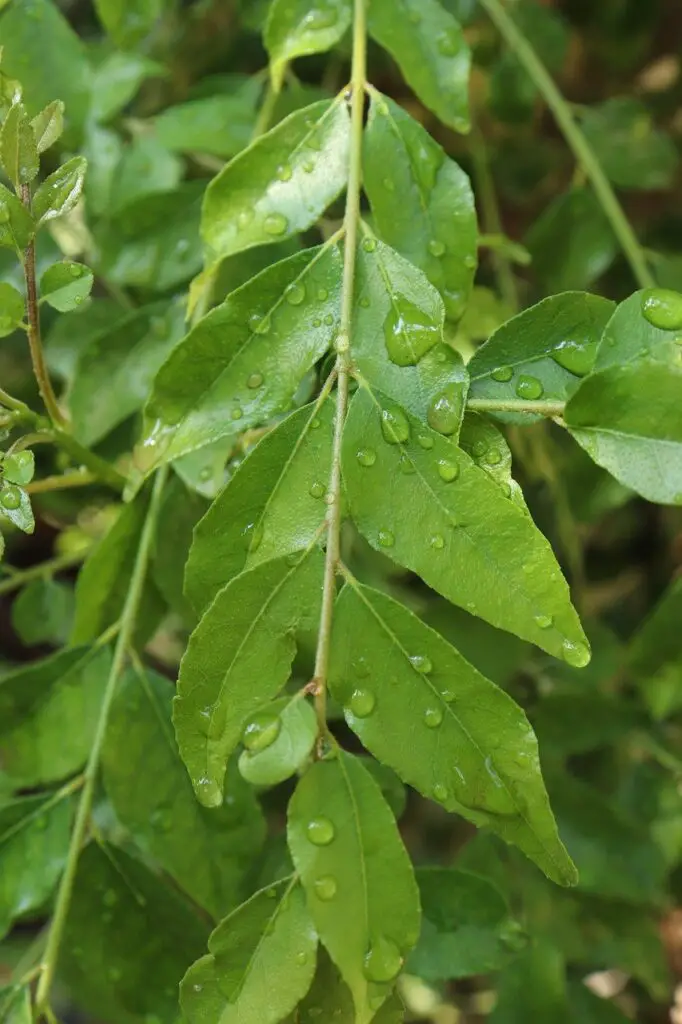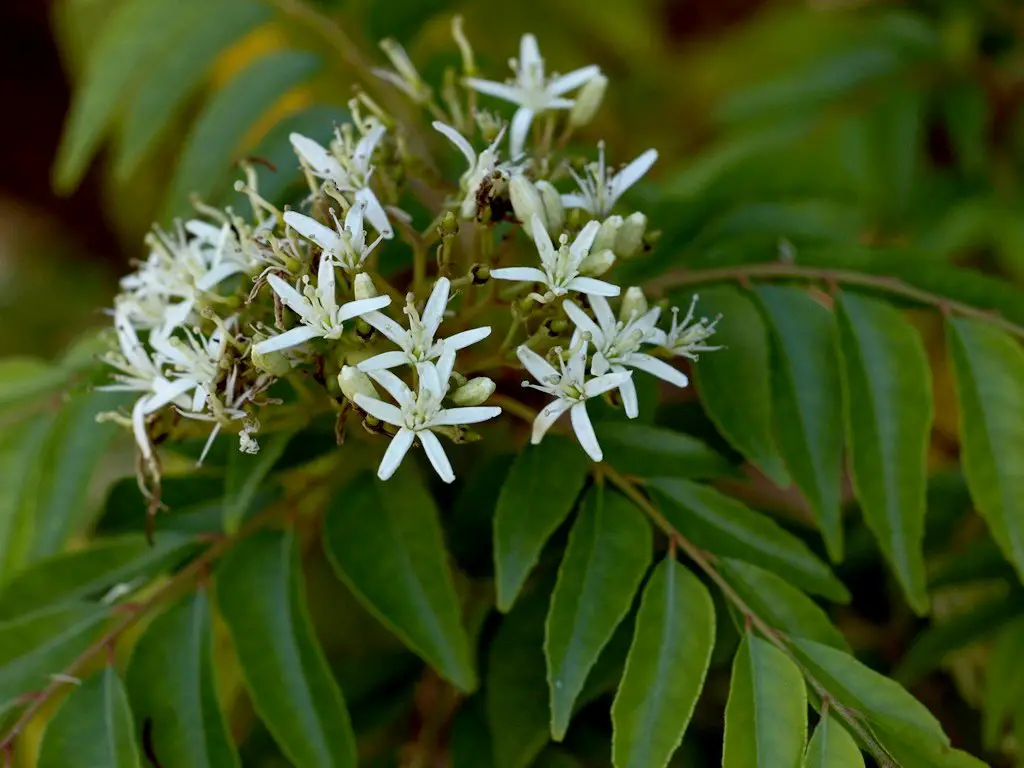A passionate gardener always wants a beneficial herb in his or her garden. A herb or a tree will not only beautify the garden but also provide some good input for the kitchen and also good for the health. To achieve this goal, you need to learn how to grow curry leaves at home without seeds.
Curry Leaves

Curry leaves are small bush or tree which is usually found in Asian countries like India. But now it is cultivated on all the inhabited areas of this planet. This tree grows up to 14 to 19 feet in height. Its foliage is unique. The fruit of this plant is poisonous. So, remove it before using curry leaves.
Curry leaves are used in soups, stews, sauces, and other dishes like bay leaves. It is normally used when it is fresh. Actually, it is known for its amazing aroma which makes it unique and stands out. It is used in many dishes and also in desserts.
One other quality of curry leaves is that it’s antioxidant. It keeps the blood sugar levels at the optimal level. And it is also good for the stomach. That’s why usually people grow this plant in the home or in their gardens.
This plant can be domesticated. It can be grown in the pot or container as well as in the garden soil outdoors. You can grow curry leaves from seeds which is a bit difficult and time-consuming. While there is another way too, it can be propagated from its leaves. Which is quite easy to do and takes less time to grow.
Along with other qualities, curry leaves can be grown all over the United States. It is tolerant of mild droughts. Means it doesn’t need much care once it is grown. It is good in warm weather where sunlight is direct and bright.
How many types of curry leaf plants are there?
Generally, it is known as curry leaf. But there are three types of this plant out there. Which are known as the regular, dwarf, and gamthi. It is usually preferred for its strong aroma.
Regular is just like the regular curry leaves the plant. The dwarf is usually the most preferred and domesticated curry leaves. It has a very strong and good aroma. Its leaves have a bitter taste, but the sharp smell makes it lovely.
Gamthi is even little in height and usually not preferred when curry leaves are chosen to grow. These are fewer in quantity in comparison with the dwarf. It is because of its slow growth rate. But the quality over quantity, it has a good strong smell. It needs full sunlight, and well-drained soil to grow.
Actually, the growth and care of the curry leave plant make it one of the easy-going plants to grow. It has multiple health and culinary benefits which makes it fit for every garden or pot. Besides that, it also fulfills the requirements of the decoration of a garden or a house.
Growing Curry Leaves Plants
As we mentioned earlier, it is not difficult to plant and grow curry leaves. Interestingly, it has two methods to be grown or sown. One method is growing the curry leaves from seeds. This method is quite difficult and time taking. Also, the rate of germination is also a factor in its discouragement.
While on the other hand, the method of propagating the curry leaves from their own plant, through stems and leaves is quite good to follow. It is easy, less time-consuming and most of the time, it is quite successful. So, we are going to focus on this method of planting.
Can we grow curry leaves from stem?
Propagating through stems and leaves is one of the quite easy and effective ways to grow the curry leaves plant. It just needs the right soil, light, and some other care at the start. Then you are good to go. Because it can sustain itself afterward.
How to grow curry leaves at home from stem
The selection of good stems to propagate is important. Because it is the base of all of the coming processes. Make sure it is flexible and healthy enough to stand. The stem should have three to four sets of leaves as well. It should be the thickness of the pencil and at least 5 inches in height.
Now trim the stem of curry leaves. Cut it from the highest bud and make sure there are no rough spaces around the bud. Take out the leaves around the bud and base of the stem. These leaves are not required. Before dipping it into the ground, dip the stem in hormone powder or turmeric powder.
Soil and Sunlight for Curry Leaf Stem to Propagate
Use soil that is slightly acidic and well-drained. Mix the organic composted mixture or any other mild fertilizer to get the nutrients to the optimal position. The use of coco peat for the selection of soil in the container is good. Loosen the upper layer of the soil.
Does curry plants need full sun?
Sunlight is important for the growth of curry leaves. At the initial stages, keep it for 3 to 5 hours in the sunlight daily. Then keep it in the shade. The established plant needs 6 to 8 hours of sunlight per day. Kindly note if you don’t have enough sunlight, use artificial manners to fulfill the requirement of light. It is very important.
Watering and Fertilization of Curry Plants
Watering the soil before propagating the stem is important. It will keep up the required moisture level for growth. Also, make sure that you will water it again after it is dried. Overwatering the curry leaves plants can result in the death of a plant.
Keep the pot or bed of plants under the cover of a polythene bag or in a greenhouse. The new buds will get developed after 10 to 12 days. Pots need to be in shade for some weeks to make sure the roots are intact firmly.
Mild fertilizers like nitrogen are good for the curry leaves plants. Don’t use any strong fertilizers because it will result in burnt roots of the plant. Curry leaves plants need only mild fertilizers.
Winter Dormancy and Summer Growth
Curry leaves cannot tolerate the harsh winter weather. You need to be careful and keep it in a shade. Reduce the water in the winters. Don’t use any fertilizers. Start watering in the spring when it grows again.
Taking Care of Curry Leaves Plant

Now after the propagation of the stem our plant has grown and is going forward. Now there are a few things to be taken care of so that the steady growth of curry leaves plants continues.
Water the plant when the soil surface is dry. It is important to watch because excess watering can damage the plant. So, use your finger to check the moisture of the soil.
Keep the plant in the sun for the most of the day. Now it has grown. It needs light to grow the leaves effectively. 6-8 hours in a day is the required sunlight time for it.
Prune the plant every year. If you see any weak leaves, cut them off. Normally cut the plant about three inches. It not only keeps the plant in the right size but also develops resistance to harsh seasons and diseases.
Repot the plant to ensure steady growth of the plant every year. Use a new mixture of the soil and organically composted material so that the roots can get new nutrients.
When can you harvest curry leaves?
Usually, you have to wait for almost a couple of years to harvest the leaves from the curry leaves plant if it is grown from seeds. In contrast, if it is grown from the stem through propagation, it may be ready to harvest after a few months.
Pull the leaf from the stem, while plucking. Also, take only what you need. Don’t pluck more than 30 percent of the total leaves. This may result in the stagnant growth of the curry leaves.
Fry the leaves which you have plucked from the plant. This will not only increase their smell but also will increase the chances to preserve. Freeze the curry leaves to save them if you want to preserve them for a month or longer. Now you can use it as food efficiently and effectively.
If you have got more leaves than you need you can dry them and can use them later for a long time. Take the curry leaves and cook them in the oven at the lowest temperature. This will help in drying the leaves. After these leaves are dried, keep them in the sunlight for half an hour.
Now crumble the curry leaves and put them in a jar. Make sure the jar is airtight. Dried leaves have no such strong smell. Use as many in food to get your desired aroma.
This is the herb, which is both beneficial for the kitchen as well as for health. It will not only benefit you but also can help you in growing your circle, by recommending them and helping them to your fellow gardeners in times of hardships with curry leaves.
You May Also Like
References
https://www.quora.com/How-can-I-grow-a-curry-leaf-plant-other-than-its-seed
https://www.gardeningknowhow.com/edible/herbs/curry/growing-curry-leaf.htm

